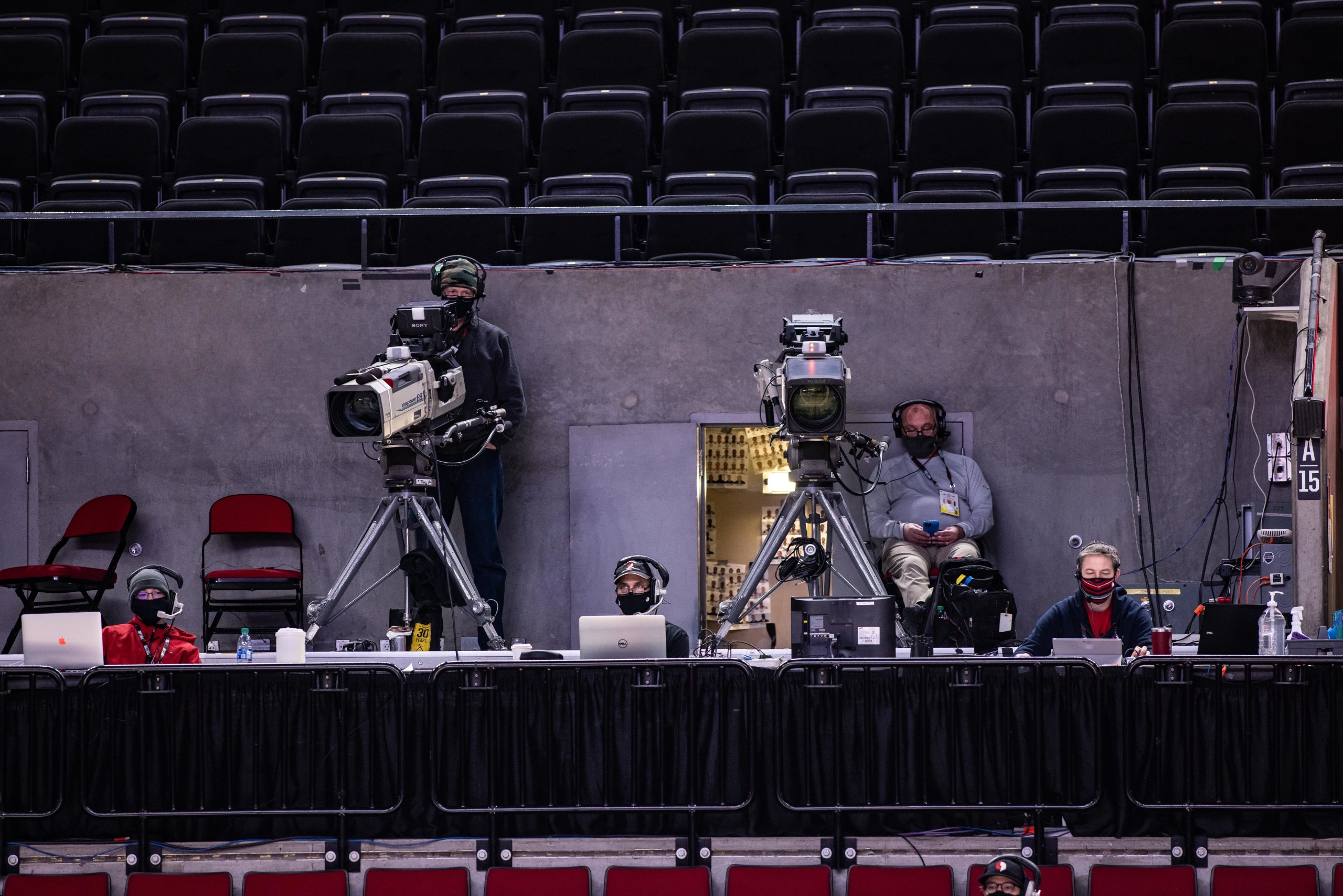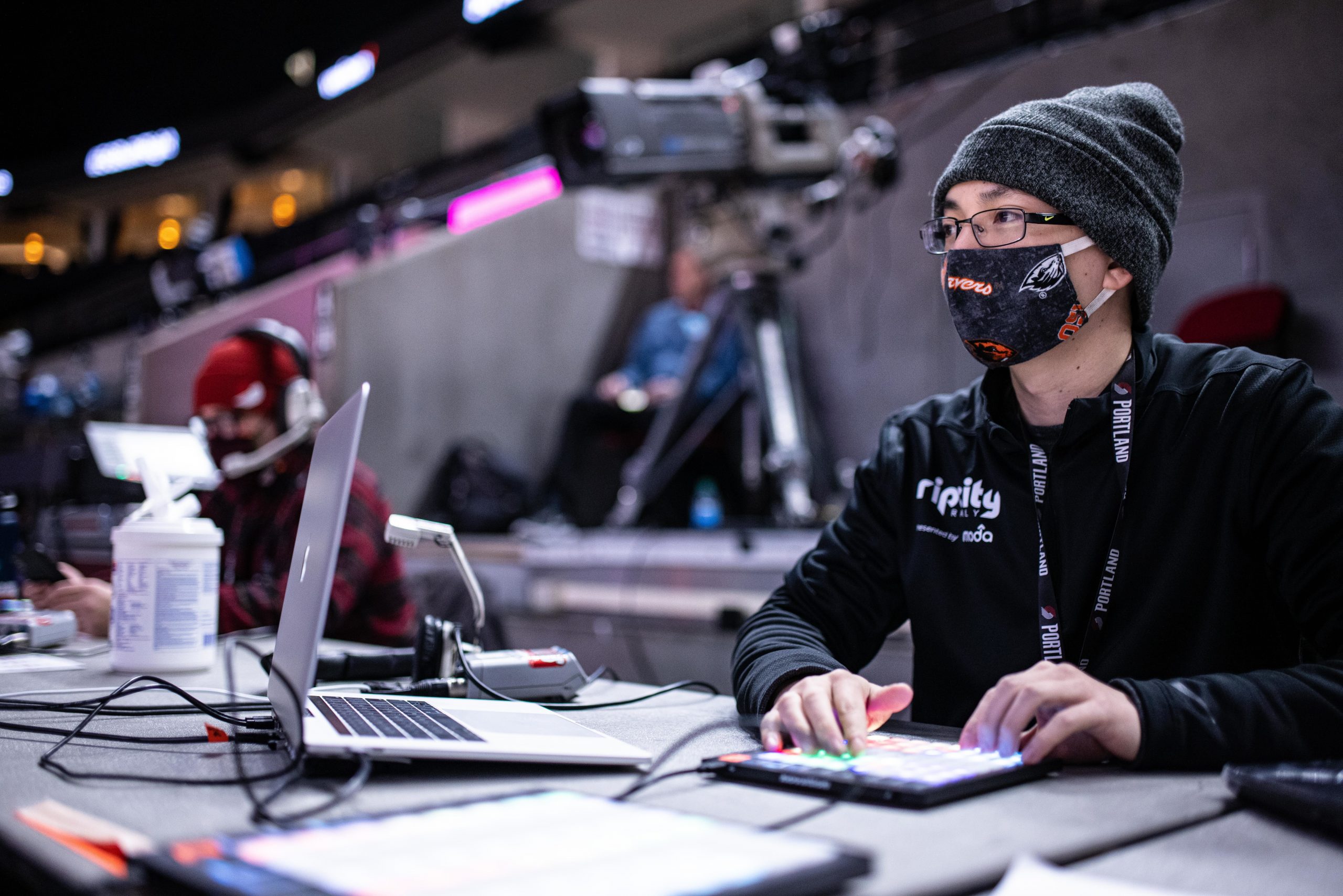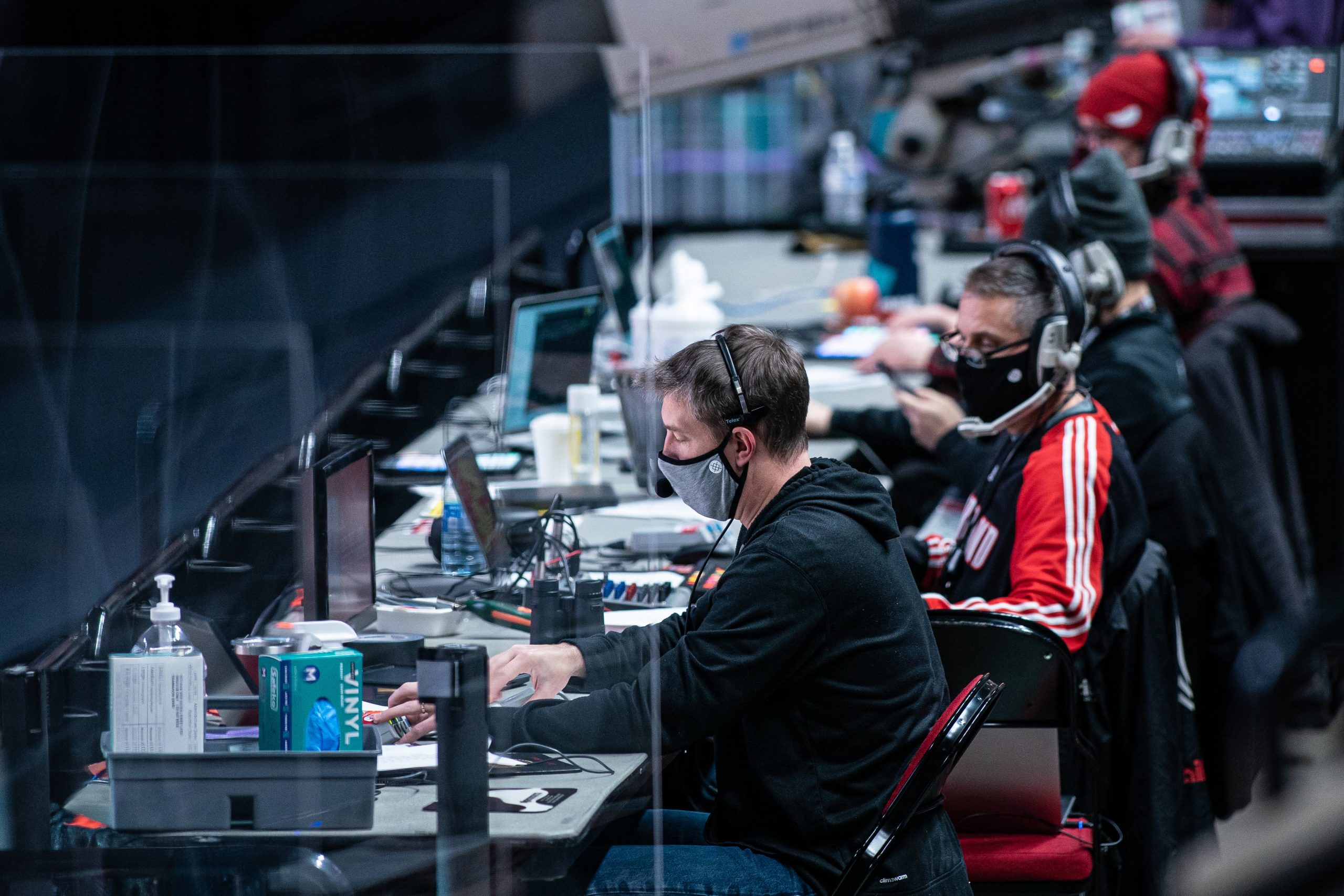On the Hardwood: Portland Trail Blazers Manage LED Displays at Moda Center To Educate, Entertain Fans on League Pass
Content features historical players, throwback games
Story Highlights
The doldrums of 2020 may be in the past, but 2021 is still presenting challenges to in-venue production teams. Now out of the Orlando bubble, NBA organizations are hosting games in their home arenas and navigating the continuing difficulties of the pandemic. Like SVG’s At the Ballpark and On the Gridiron series, On the Hardwood will take a look the hardships, creative ideas, and teamwork of NBA franchises.
Since opening in 1995, Moda Center has become one of the toughest, loudest buildings to play in as a visiting team. In 2021, seats remain empty, lacking 19,000 screaming Portland Trail Blazers fans. The venue’s videoboard has become the production team’s canvas and is populated with a wide range of content for national and international fans watching home games via NBA League Pass.
“On League Pass, fans get to go inside the arena and see what’s happening during a timeout or commercial break,” says Todd Bosma, director, game operations and events, Portland Trail Blazers. “Sometimes, the videos that we’re producing and showing on the videoboard will also get picked up on League Pass.”
MORE ON THE HARDWOOD INTERVIEWS:
- After Assisting Fox Sports Sun, Miami Heat Retrofit Control Room for Games in AmericanAirlines Arena
- Milwaukee Bucks Leverage NBA Bubble Experience for 2020-21 Slate at Fiserv Forum
- Sacramento Kings Improve In-Venue, At-Home Experience With Intel True View at Golden 1 Center
- Atlanta Hawks Honor Legacy of Martin Luther King Jr. in First of Season-Long ‘Unity Nights’
- How Kyle Campbell Balanced Productions for the NBA’s New Orleans Pelicans, NFL’s Saints
- Houston Rockets Work With League, RSNs To Produce Away Radio Broadcasts in Toyota Center
- Golden State Warriors Connect Team, Chase Center to Fans at Home Through Dub Hub Experience
- Despite Limited Fans, Cleveland Cavaliers Keep the Energy Up at Renovated Rocket Mortgage FieldHouse
- Charlotte Hornets Redesign Mobile App To Bring Spectrum Center Content to the Home
- Philadelphia 76ers Continue Treasured Traditions at Wells Fargo Center
- Minnesota Timberwolves Feature On-Court Media Day With Drone Flyover at Target Center
- Chicago Bulls Use Year-Old Videoboard, Mobile Predictive Gaming To Draw Up Production Plan
- Denver Nuggets Repurpose RSN Broadcast With Some In-Venue Flavor
- With Empty AT&T Center and Reduced Game-Day Staff, Spurs Add ‘Digital Arena’ to Mobile App
Global Audience: Videoboard Is Path to the Past on NBA League Pass
League Pass, the NBA’s direct-to-consumer streaming platform, is used by a massive number of fans within the U.S. and selected countries around the globe. On any given night, fans can experience the in-venue flair of each franchise and see the similarities and differences of a production. From lifelong Blazers fans to first-timers tuning into a contest at Moda Center, the production crew is pumping out facts and historical lessons for all viewers.
“We’re showing a lot of throwback games and historical players on the videoboard,” notes Bosma. “This is an opportunity for us to educate Trail Blazers fans or other fans throughout the country and the world about some of our players.”
Besides these flashbacks, the production team is showcasing the athletic abilities of some of the Trail Blazers players, such as five-time NBA All-Star Damian Lillard and 2016 NBA Most Improved Player CJ McCollum. The content includes features that show off player personalities, as well as top plays from around the league.
“During timeouts, we’re presenting a lot of highlight videos,” he says. “Damian Lillard is in the top 10 in scoring and assists, so we’re continuing to promote him for the All-Star Game since it’s topical right now. We want to make sure that they’re feeling the love from us.”
Warmup Soundtrack: Players Pick the Music Prior to Tipoff
Athletes are inherently creatures of habit. They believe in superstitions that others would deem ludicrous. One of these quirks is the playing of certain songs during warmups. Since the stands are empty, they have full control of what is heard through the speakers. For added personalization, each player gets to choose three songs on the 60- to 90-minute playlist.
“Jusuf Nurkić has Bosnian music, so, during layup lines, Carmelo Anthony always looks up at our DJ and tries to change the music,” says Bosma. “It’s always fun to see what they choose.”
It’s one of the first occasions since high school or college when they have complete control over the arena’s music. One audio deployment that they’re welcoming is the use of fake crowd noise. Bosma; Manager, Game Operations and Events, Willen Sin; and other members of the staff are tasked with replicating the passion usually heard during a normal game at the Moda Center. The NBA bubble in Orlando, which the Trail Blazers participated in, was a small and controllable environment. Back home, the 785,000 sq.-ft. building presents a more difficult auditory challenge.
“The bubble was a small venue that didn’t have a huge open space behind the baskets, so the production team pumped in crowd noise to create that feel,” Bosma explains. “Now, in this huge building, we’re figuring out how to make it feel a little bit more intimate.”
Logistical Labyrinth: Operations Develops Full-Scale Safety Plan
In the Pacific Northwest, the Trail Blazers in-venue team is dealing with a unique set of operational restrictions. In the bowels of the edifice, the team (technical director, director, two EVS operators, a still-graphics operator, and motion-graphics operator) is normally housed in a 15- by 15-ft. control room that doesn’t allow a natural line of sight to the court. Needing to produce fabricated crowd noise in real time, audio operators are positioned on a camera platform above the lower bowl. For this season, the staff is going in a different direction to enforce safety protocols.
“If we were to go with a full staff, we would have to reconfigure our control room or displace certain people to maintain social distancing,” Bosma explains. “We don’t have any of our own dedicated cameras, so I have only an EVS operator and a director/TD doing two jobs.”

The production team relies on footage from NBC Sports Northwest cameras for the in-venue videoboard.
In accordance with the league’s zoning rules, Bosma is located in Zone B, which is above the court where the audio team is seated. To prevent any cases of cross-contamination, a designated pathway has been built to ensure one-way traffic. If Bosma needs to head to the control room, it’s quite an adventure to get from his position to the basement.
“I have to walk all the way around the arena, down one set of stairs, into another other stairwell, and through a door,” he explains. “It’s a bit of a struggle to get to the control room.”
Cheer From Home: In-App Live Stream Lets Viewers Predict Plays, Chat in Real Time
Away from the venue, fans are using laptops and mobile devices to interact and engage with the franchise. Through the stellar work of the social-media and digital team, platforms like Twitter and Instagram are displaying stunning visuals and video for people to chew on. On game day, the Trail Blazers’ mobile app gives fans even more options through a second-screen experience.
“We’ve created Trail Blazers Home Court, which is a 40-minute live stream housed in our mobile app,” says Bosma. “It gives fans an opportunity to get into some of those traditions that they normally would see if they were coming to a game.”

Despite the fan-less arena, the Trail Blazers production provides pregame elements, including smoke during player introductions.
Led by Performance Teams Manager Michelle Burch, these traditions include halftime performances, pregame warmups in which fans can follow a particular player, and in-venue content played on the videoboard. The app also offers written articles from the team’s website, local media personalities to chat with some fans, and other chances for fans to communicate with each other in real time.
“We have a predictive gaming program, called Beat the Buzzer, where people can guess what they think is going to happen next,” he explains. “We’re also bringing in members of our performance teams to talk about what it’s like being a dancer for the Trail Blazers.”
The Ones Who Get It Done: Trail Blazers’ Production Team
Getting settled into this new season was a tough job to do, but, with the help of Rip City Management, the organization is set up for success with safety in mind. As the season progresses, they will rely not only on this reliable infrastructure but also on the passion that they have for their job.
“I’m exceptionally proud of our entire group,” says Bosma. “The tenacity, professionalism, and fun that they have is what makes coming to work such a dream.”
The Trail Blazers will play their next home game at the Moda Center against the Washington Wizards on Saturday, Feb. 20 at 10 p.m. ET.


